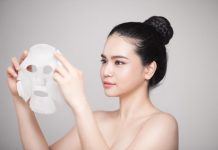Skin care is a huge – and often fraught – topic, with a dazzling array of products, promises, and tips, some of which, such as the oft-recommended lemon juice and toothpaste concoctions, do far more harm than good. Even personalized skincare can be touch and go, with existing personalization segmenting skin into just three types. New skin sensor technology could cut through this noise and let you drop the beauty filters, and help your skin by doing so.
The constant improvements to the front-facing cameras on smartphones and developments in processing power and machine learning have led to the commercialization of smartphone and selfie-based skin analysis tools. These sensors and programs can be used to detect the exact needs of the skin. They will enable companies to provide hyper-personalized solutions, ranging from bespoke bottles of cream down to customized doses per day.
For images to be usable in skin analysis, they should have the following features – Adequate brightness, either environmental or provided by the imaging device; White balance must be adjusted for a balanced color image; and, High resolution.
Though the technical specifications and application of skin analysis technologies are changing, the skin parameters that are analyzed are constant. Broadly, the parameters are – skin hydration, topographical features, sebum, color, and skin elasticity/firmness.
Topographical features – wrinkles, fine lines, pores
Wrinkles and lines are folds and valleys in the skin – wrinkles are substantial features, greater in size and depth than fine lines. Wrinkles are a feature of aging skin. As humans age, skin and other tissue become thinner and drier. Elastin and collagen content in the dermis is decreased due to lower production by fibroblasts (at constant or even increased rate of degradation), resulting in flabby and sagging skin and the formation of wrinkles and fine lines on the skin surface.
External damage, such as UV from the sun, can also contribute to the formation of wrinkles. It is estimated that about 80% of extrinsic aging is from UV damage. Other factors, such as smoking, alcohol use, and even dry skin, can increase the destruction of collagen and elastin and lead to the formation of lines and wrinkles.
L’Oreal acquired Modiface and utilized the team to bring a suite of AI solutions to their consumers, assessing everything from texture and wrinkles to simulating hair and makeup changes.
Olay offers one such skin analysis app (P&G, AI developed by PARC). The process is simple – the user takes a selfie using the front-facing camera of their tablet or smartphone and receives an analysis of separate areas of their skin.
Sebum, including acne
Sebum contributes to the ‘oiliness’ of skin. While usually spoken about negatively, sebum’s purpose is to lubricate the skin and hair and aiding the skin in maintaining its barrier function. However, excessive sebum production can result in clogged pores. Pores can also become clogged due to pollution and dead skin cells. Acne is a common skin condition, and among its many causes, increased sebum secretion is the major factor.
Chowis Technology has an ai-based technology called mySkin Choice. It is a multi-platform skin diagnostic service that can analyze multiple skin parameters. At this moment, mySkin Choice can analyze up to 10 parameters: Pores, Impurities (such as Acne, Dirt, Excess Oil, Blackheads), Wrinkles, Spots, Sebum, Moisture, Skin tone, Skin Score, Skin type, and Dark Circles.
While Chowis Technology uses a film-based measurement for sebum, they also offer ‘shine’ analysis. To do this, the software identifies the top 2% brightest pixels in a grayscale image and attributes them to shine (sebum).
Color, including dark spots, redness, and overall skin tone
In addition to skin tone, the other color concerns of the skincare industry are dark spots and skin redness.
Skin tone: Melanin, produced by melanocytes in the skin’s epidermis, defines a person’s skin tone. This is generally defined by genetics, but exposure to UV light (e.g., the sun) increases melanin production and deepens skin tone.
Dark spots/hyperpigmentation: Additional factors such as sun or free radical damage can influence melanin production, and increased production in one area can result in dark spots. The main cause of dark spots is UV damage, but it can be hormonal, a side-effect of medication, inflammation, or wound healing (such as after acne).
Redness: Skin redness, also referred to as erythema, is caused by increased blood flow in the capillaries in the dermal layer. This can be influenced by temperature and emotions.
Determining skin tone/color is helpful for the matching of cosmetics. Monitoring color changes over time can be indicative of the whitening effect of skincare products. The monitoring of redness is typically done for medical conditions, though of course related to the use of skincare products to address the medical conditions.
In general, any digital color photograph taken in controlled conditions (lighting) can provide a reasonable assessment of skin tone. Today, even the quality of smartphone cameras is high enough to present a reasonable analysis, even when based on a selfie taken on a front-facing camera.
Researchers from the University of Washington have developed a method of using a smartphone to achieve pseudo-hyperspectral imaging for skin studies – seeing beyond just the color of the skin to hemoglobin and melanin, making a usually high-cost resource potentially accessible for all.
However, imaging conditions and the camera’s temperature and white balance would also affect the results. White lighting (such as LED) should be used for best effect, and for those who want to track their results over time, the image should be taken at the same time of day and in the same location if possible.
Skin elasticity/firmness
Skin elasticity and firmness depends on the elastin and collagen content within the skin’s dermal layer. Elastin is responsible for maintaining elasticity in the skin, while collagen keeps the skin structure in place (firm).
Due to aging and other extrinsic damage, the elasticity and firmness of the skin decreases over time. Fibroblasts within the dermal layer produce less collagen and elastin over time, while the degradation of these fibers continues. Many of today’s skincare products attempt to replace collagen (applied or taken orally) or boost their production (retinoids, hyaluronic acid, etc.).
PIE offers image-based elasticity analysis based on the idea that when skin becomes less elastic, it naturally droops. The elasticity measurement is based on the droop observed in the pores of the skin. Elastic skin tends to have a round shape, while aged skin has pores that are tiled downward as ovals. These are connected in elastic ‘lines.’ The Janus system from PIE looks at the length of the lines.
IDTechEx’s latest report on the Skin Sensors Market, ‘Skin Sensors 2020-2030: Technologies, Markets, Players, Forecasts,’ predicts that the industry will be worth over US$ 275 million by 2030. For more information on this report and related research, please visit www.IDTechEx.com/SkinAnalysis.








